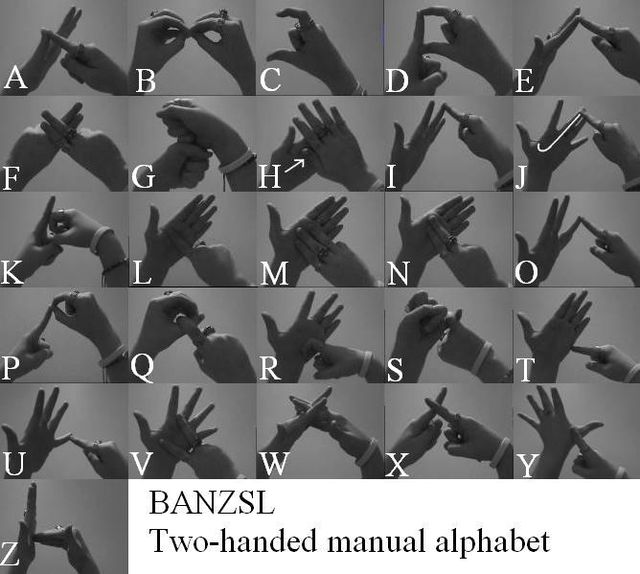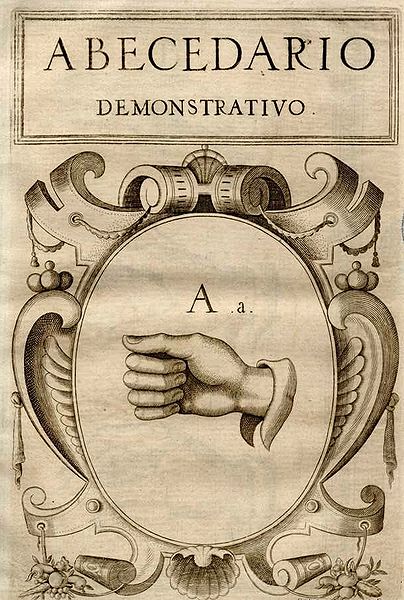Two-handed manual alphabets
Several manual alphabets in use around the world employ two hands to represent some or all of the letters of an alphabet, usually as a part of a deaf sign language. Two-handed alphabets are less widespread than one-handed manual alphabets. They may be used to represent the Latin alphabet or the Cyrillic alphabet.
This chart shows the BANZSL alphabet.
Fingerspelling is the representation of the letters of a writing system, and sometimes numeral systems, using only the hands. These manual alphabets have often been used in deaf education and have subsequently been adopted as a distinct part of a number of sign languages. There are about forty manual alphabets around the world. Historically, manual alphabets have had a number of additional applications—including use as ciphers, as mnemonics and in silent religious settings.
Ukrainian manual alphabet
1494 illustration of a finger alphabet and counting system originally described by Bede in 710. The Greek alphabet is represented, with three additional letters making a total of 27, by the first three columns of numbers. The first two columns are produced on the left hand, and the next two columns on the right. Luca Pacioli modified the finger alphabet to the form shown above, where the handshapes for 1 and 10 on the left hand correspond to the 100s and 1000s on the right.
A
B, C, D





